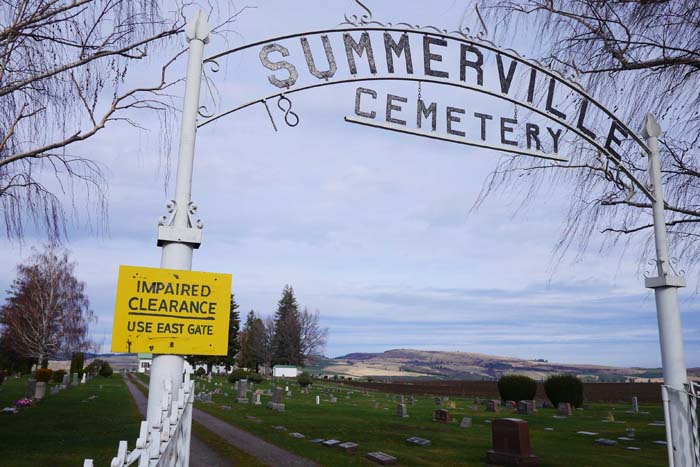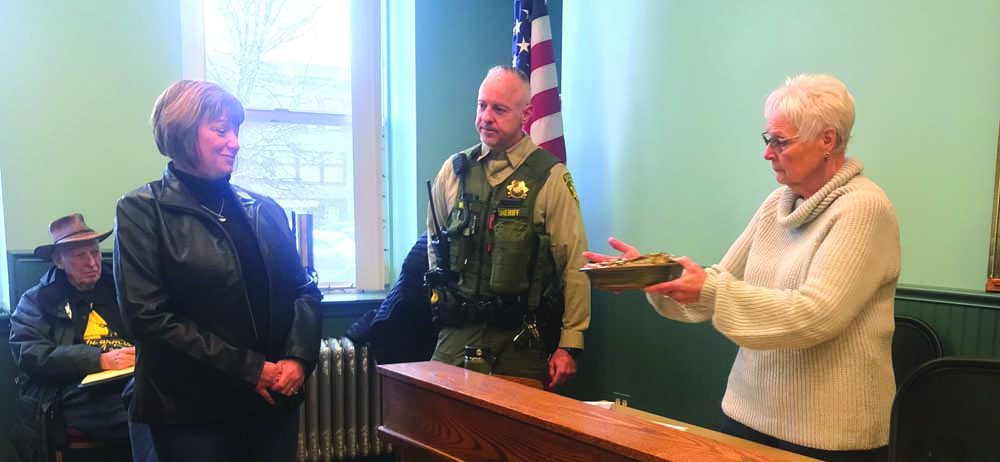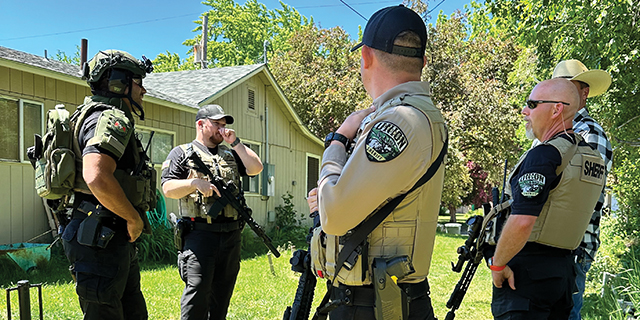Summerville Cemetery enforces clean-up policies
Published 7:30 am Saturday, November 26, 2016

- The gates of Summerville Cemetery, with the year ‘1866’ built into it’s frames, can be seen off Summerville Road not far from the town of Summerville. The cemetery’s board of directors unanimously agreed to tighten the enforcement of their grounds-keeping policies. (Tim Mustoe/The Observer)
Summerville Cemetery’s board of directors unanimously agreed to tighten the enforcement of its groundskeeping policies regarding items of adornment, flowers and other items placed at grave sites. All prohibited items will be cleared away by the end of the year.
This issue came up when a frequent visitor to the cemetery, Amanda Murchison King of La Grande, asked if she could decorate her family’s plot of three graves. One of the three graves had already been decorated with white stone and red edging years ago with permission from the late sexton Emery Oliver, so she didn’t anticipate any objection to her request. Still, she thought she would get permission first.
“I called (cemetery manager) John Mola in April 2015 and asked him if I could remodel and make it so that (the graves of) my grandmother, grandfather and my aunt were all done in one (grouping), extending the rock bed. John said it would be absolutely fine, but the only thing I couldn’t do was plant any bushes. I wanted to put a bench out there, nice slate stones, and we would also build a border. John said that would be just fine.”
King proceeded to consult with other family members and eventually drew up landscaping plans. Her husband purchased raw materials and built a bench that they wanted to place inside this decorated plot of land.
One day last August when King was doing her weekly grooming of the grave sites, the groundskeeper informed her that things had changed, and that he was instructed to remove the decorations around her aunt’s grave. Confused, King called Mola again.
“John said that he knew he gave me permission but apparently the board had changed its mind on what they would allow,” King said. “I told him, ‘Well you did give me permission and so I purchased all these things already. My husband built the bench, so it’s not like we can return this stuff.’”
King said that Mola directed her to board member Carrie Bingaman for further discussion. King was keenly interested in attending a board meeting when this issue was going to be considered, but she said that she didn’t get any definitive date for the next meeting. Consequently, King missed the board meeting and heard nothing about the decision they came to.
King became aware of the board’s decision earlier this month when she visited the family graves and discovered that the landscaping stones and edging over her aunt’s grave had been removed. King did not know where the removed landscaping materials went, and she and her mother, Laura Murchison Tucker, of Pocahontas, Arkansas, were upset that the grave had been stripped down to bare dirt.
“We’d like to see sod put down over this grave, and we’d like to know the policy, what we can and can’t do at our family’s grave sites at the cemetery,” Tucker said.
King said she believes there should be more communication between everyone involved.
“I’d like the communication between everybody involved on the board or employees or any of that to be the same. They all need to be on the same page,” she said. “For this situation, that’s where this whole thing occurred. They (should be) telling people the same things, not different stories to everybody, and that goes back to having the policy available to everybody.”
The cemetery association has no social media or website presence to post its policies. Communication with the public is limited to incidental contact at the cemetery. There people may gain access to a policy book kept in the garage if the groundskeeper is present.
Bingaman explained that the heightened enforcement of the cemetery’s groundskeeping policies center around ease of maintenance. The association can afford to hire only one groundskeeper, and his workload becomes extensive when people decorate their family’s grave sites.
“You don’t realize there are 11 acres out there and easily 3,000 stones,” she said. “We try to keep everything in a row so it’s easier to mow. A lot of people leave a lot of clutter. A different family from a different area had a lot of trinkets to the point where we couldn’t get in and maintain the headstone because there was too much clutter on it. Our policy is that we’ll clean it up, put it in a box, and if you haven’t picked it up within six months or asked about it, it will probably be discarded. I would think that most cemeteries have the same policy.”
Mola said that when he accepted his position as manager two years ago, the groundskeeping policy at Summerville Cemetery had been in place for years. It just hadn’t been enforced strictly. Decorations had been allowed in the past that should not have been, and the board is now uniformly clearing out and removing from the cemetery all prohibited items by the year’s end.





